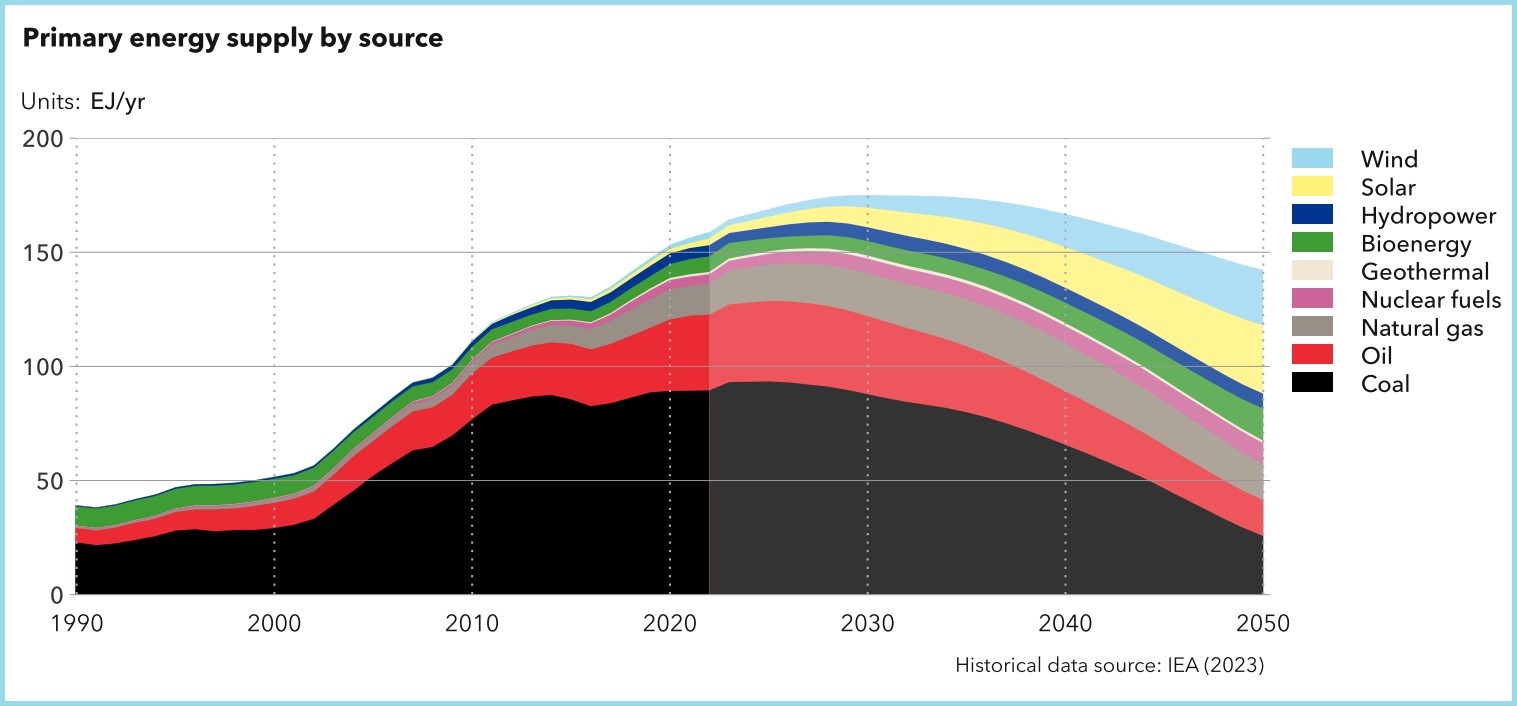
Photo: 琛茜 蒋 from Pixabay
China is making huge progress toward its goal of reducing net emissions to zero, and by 2050 it may increase its renewables capacity fivefold and reduce its share of global CO2 emissions from 33% to 22%, Norwegian consulting firm DNV estimated in a report on the country’s energy transition.
China has pledged to reach climate neutrality by 2060. The report Energy Transition Outlook China 2024 – A national forecast to 2050 demonstrates it is progressing very well.
“No one who has visited China regularly over the past decade or so, as I have done, will have failed to notice the skies above the cities becoming clearer and the streets increasingly filled with electric cars and buses. These are the visible signs of a vast decarbonization effort taking place in China,” DNV CEO Remi Eriksen said.
He noted that in 2023 the country was responsible for a third of the world’s energy-related CO2 emissions and forecasted that by 2050 the share would drop to a fifth.
In absolute terms, China’s emissions will drop by a staggering 70%, he stressed and attributed the trend to replacing coal with renewables and electrification.
China to surpass North America, Europe in share of electricity in final energy consumption
China is spearheading investments in renewables on a global scale, which is changing its power mix. The share of renewables in total electricity generation in the country will increase from 30% today, to 55% by 2035, and 88% by 2050, the firm estimated.
By mid-century, solar and wind will be generating about 38% of electricity each, it added. More than a third of photovoltaic capacity is seen combined with storage, mainly batteries, the document reads.
The report’s authors expect nuclear installations to double in absolute terms but remain small in relative terms, producing only 5% of power in 2050.
Renewables’ growth would slash CO2 emissions. In 2022, China contributed 33% to global energy and process-related CO2 emissions, mainly from coal combustion. DNV finds they are likely to peak by 2026 and drop to 22% of the global total by 2050.
As for the longer term, China is close to meeting its carbon neutrality target by 2060, but it needs to accelerate decarbonization of some sectors, especially manufacturing, to ensure it will reach net zero by then, the report reads.

According to DNV, China’s energy usage is slated to peak by 2030, followed by a remarkable 20% reduction by 2050 as a result of electrification and efficiency initiatives as well as the projected 100 million population decrease.
Of the 10 world regions in the forecast, China currently ranks sixth in terms of demand electrification but it is projected to rise to second place by 2050. It would comprise 47% of final energy demand and surpass Europe and North America, the data showed.
National energy security is an overarching strategic goal of the energy transition
National energy security is an overarching strategic goal at the center of Chinese policy, DNV pointed out. However, the government’s ambition for energy autonomy was only partly achieved, it underscored.
The power sector is the first mover in replacing coal with domestically sourced renewable energy, but domestically produced coal will be sufficient for the remaining coal demand segments by 2050, the authors wrote.
The report adds that although oil consumption halves by 2050, its use lingers and 84% is met through imports. Natural gas consumption remains high, with 2050 consumption only 2% below 2022 levels, with 58% being imported.
A faster transition to net zero in 2050, where more oil and gas are replaced by domestically produced renewables or nuclear, would significantly boost energy independence, the document reads.









Be the first one to comment on this article.